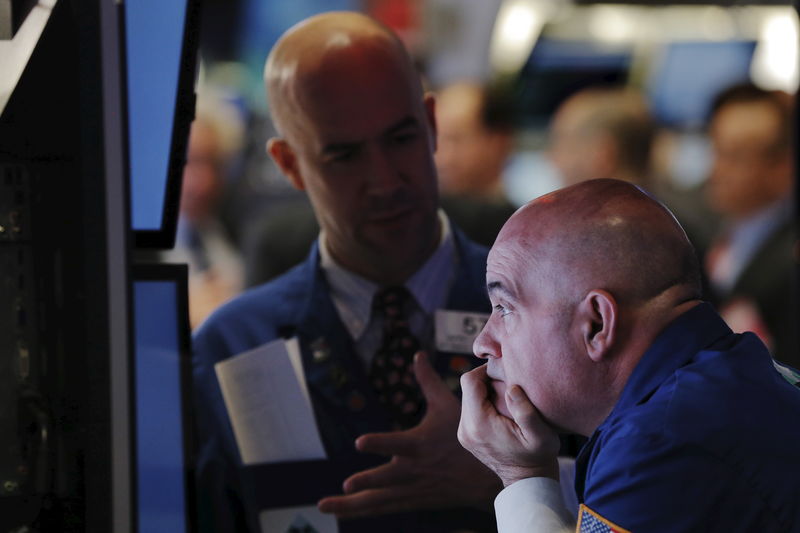 © Reuters.
© Reuters.
By Yasin Ebrahim
Investing.com -- The S&P 500 cut losses to end the day above session lows Thursday, amid signs of dip-buying activity after hopes of a diplomatic solution to the Russia-Ukraine conflict were dashed as both sides failed to find a breakthrough in talks on a ceasefire.
The S&P 500 fell 0.4%, but had been more than 1% lower. The Dow Jones Industrial Average fell 0.3%, or 112 points, the Nasdaq Composite fell 1%.
Ukraine’s Foreign Minister Dmytro Kuleba said there was “no progress” on discussions concerning a ceasefire, and said that demands from his Russian counterpart Sergey Lavrov would amount to a surrender for Ukraine, something the country isn't prepared to do.
"Russia is not in a position at this point to establish a cease-fire. They seek a surrender from Ukraine. This is not what they're going to get," Kuleba said following a sit down with Russia’s Lavrov.
Many had hoped that Ukraine’s softer stance on seeking to join the NATO military alliance – in the days leading up to the meeting – would pave the path toward a diplomatic resolution.
The lack of a breakthrough renewed fears that prices for key commodities including oil, gas, wheat and corn -- key exports from Russia and Ukraine -- will remain elevated, and keep inflation higher for longer.
International Monetary Fund Managing Director Kristalina Georgieva said the IMF expects to cut its global growth estimate next month owing to the economic set back sparked by Russia's invasion of Ukraine.
The consumer price index rose 0.8% in February, pushing inflation for the year through February to 7.9%, the hottest annual increase since January 1982.
“The risk is that the inflation we are enduring now could become more entrenched, as it did in the 1970s. That is why the Fed is so wedded to raising rates starting in March,” said Diane Swonk, chief economist at Grant Thornton.
Technology fell nearly 3% as investors fled big tech, though Amazon (NASDAQ:AMZN) bucked the trend after announcing a $10 billion share buyback program and a 20-for-1 stock split.
Falling semiconductor stocks also weighed on the tech sector on concerns that the ongoing Russia-Ukraine conflict will exacerbate supply problems for chip companies.
Financials pared their gains from a day earlier as banks were pressured by ongoing flattening in the yield curve in the wake of growing worries that red-hot inflation and slowing economic growth increase the risk of a recession.
U.S. Bancorp (NYSE:USB), Synchrony Financial (NYSE:SYF) and Bank of New York Mellon (NYSE:BK) were sharply lower, with the latter down more than 4% as it announced Thomas P. Gibbons would be retiring as chief executive on Aug. 31.
“The headwinds for banks is clearly the Russia exposure, but it's also the flattening in the yield curve,” Melissa Brown, managing director of applied research at Qontigo, an index and analytics provider, said in an interview with Investing.com on Thursday. “Higher rates are fine for banks as long as short term rates are lower, but if that's not the case, that's going to hurt banks.”
Energy stocks was one of the few sectors in the green even as oil prices erased their intraday gains.
The earnings front served up mostly positive results, with Crowdstrike garnering the bulk of investor attention.
Crowdstrike (NASDAQ:CRWD) rolled out an upbeat outlook for the full-year after reporting quarterly results that topped Wall Street expectations on both the top and bottom lines, sending its shares more than 12% higher.
Asana (NYSE:ASAN) also reported better-than-expected quarterly results and guidance that surprised to the upside, but the outlook for increased growth will likely prove costly as the company ramps up investment. Its shares fell more than 22%.
“The product/sales expansion is coming at the expense of aggressive investment, which we expect investors to look at cautiously given the challenging macro/geopolitical environment,” Oppenheimer said as it cut price target on the stock to $85 from $100 amid valuation concerns.

